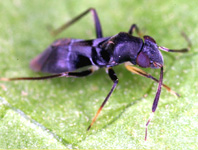Abstract
A new species of skink in the genus Caledoniscincus is described from the far north-west region of New Caledonia. It is known from a single location, the isolated ultramafic massif of Dôme de Tiébaghi, north of Koumac. The new species, Caledoniscincus pelletieri sp. nov., has a bold, white mid-lateral stripe on the body, a feature which distinguishes it from most other species of Caledoniscincus except the regionally sympatric Caledoniscincus haplorhinus (Günther) and Caledoniscincus austrocaledonicus (Bavay), and the recently described Caledoniscincus constellatus Sadlier, Whitaker, Wood & Bauer just to the south. The new species can be distinguished from these taxa in features of scalation and colouration, most notably in lacking an extension of the pale midlateral stripe between the ear and forelimbs and in having more lamellae on the underside of the fourth toe. The differences in morphology between C. pelletieri sp. nov. and the other members of the genus are complemented by a high level of genetic differentiation, further supporting its distinctiveness as an independent evolutionary lineage warranting recognition as a distinct species. The DNA sequence data for the ND2 mitochondrial gene identifies the new species as the sister to C. constellatus and these two taxa as the sister to all Caledoniscincus. The species is of extremely high conservation concern given its restricted distribution in an area that is currently being heavily impacted by human activities, and it satisfies the IUCN criteria to be ranked as a Critically Endangered species.

